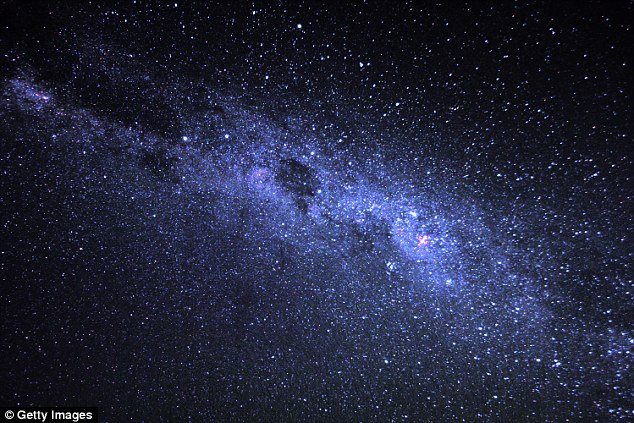Nocturnal animals rely on the Milky Way to navigate, research has found.
A new report from Sweden’s Lund University concludes that many animals that are active at night depend on individual stars or light from our galaxy to be mobile after the sun goes down.
Specifically, migrating birds, dung beetles, moths, frogs and seals, among others, rely on light from outer space.
One researcher who worked on the new report also believes a slew of other animals that have not yet been studied depend on the stars.
The new report details the advantages that nocturnal animals have because of the hours of the day that they spend awake.
The analysis said: ‘Fewer parasites are active and the same goes for predators. What is more, there are not as many competitors for food as there are during the day.
‘For animals that migrate or search for food over vast distances in particular, the cooler hours of the night are preferable to the heat of the sun.’
One of the most crucial capabilities of nocturnal animals is that of being able to maintain a strong sense of direction.
‘Migrating birds that take off at sunset rely on their magnetic compass but also the star compass when they use individual stars for orientation,’ the report said.
But not all nocturnal animals use individual stars for guidance, dung beetles among them. ‘Instead they travel through the night with the help of the light from the Milky Way, which contrasts to the surrounding dark sky,’ the report explained.
An animal’s ability to pick out individual stars comes down to the kind of eyes – either ‘camera eyes’ or ‘compound eyes’ – it has.
Researcher James Foster explained: ‘Animals with camera eyes, the type of eyes that we humans possess, can discern individual stars.
Insects with compound eyes most likely cannot, but we believe that they can interpret the starry sky and the Milky Way as patterns of light.’
Foster also explained that scientists still do not know much about nocturnal animals’ abilities. Specifically, they do not know what happens when nocturnal migrating birds are changing location.
Foster said: ‘We still know very little about how nocturnal animals experience and interpret the night sky.
‘For example, no one has yet determined whether, and how, migrating birds change their point of reference in the night sky when they pass the equator.’
But Foster expects that this will soon change. ‘I think emerging technologies, such as highly-sensitive cameras, will allow us to discover many more species that also use the starry skies to guide them during the darkest hours of the night,’ he said.












